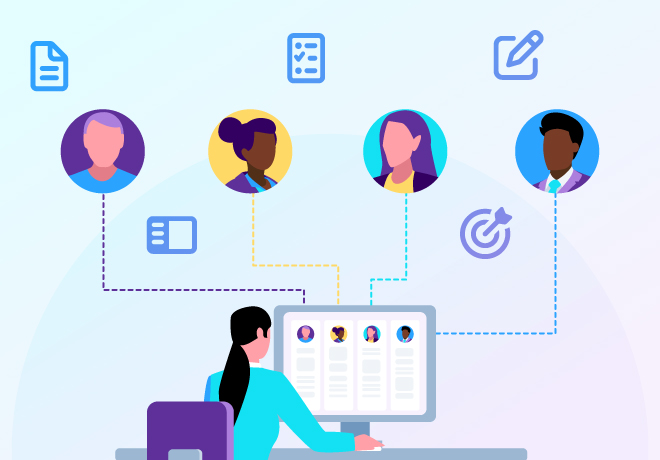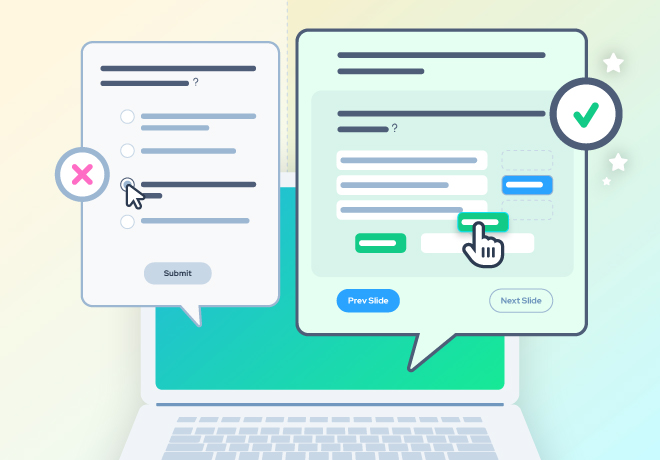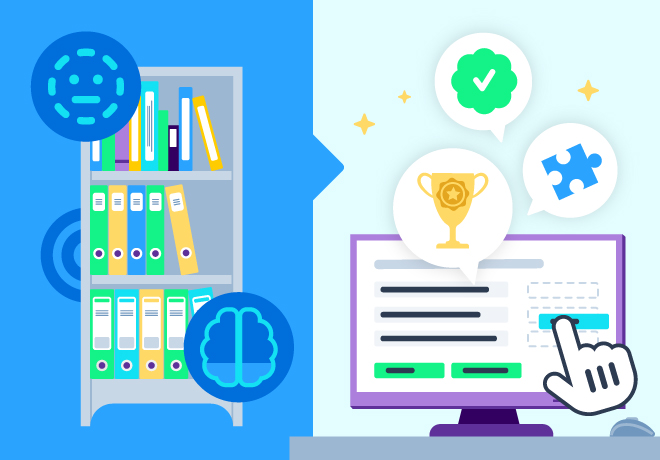
7 strategies for effective eLearning in any industry!

Related articles
Get valuable eLearning insights to your inbox.
Listen to Neovation’s Demystifying eLearning podcast generated with NotebookLM!
Listen to our podcast on your favorite platform!
Effective eLearning is about more than great design and content. The seven strategies detailed below are your path to effective, engaging eLearning.
1. Personas ensure relevant training

For eLearning to be effective, it has to be relevant and engaging to learners. Using learner personas can help you make that happen. A persona is a composite of traits your actual learner population embodies — along with a “personal story” about your fictitious learner that mirrors the experience and learning environment of actual learners. Gearing training to your personas guides you in designing and developing suitable — and more engaging and effective — eLearning.
2. Follow the science of learning

Using learning theories to guide your content development applies proven scientific principles to the structure of your online training. Instructor-led training has relied on learning theory and brain science for decades; your eLearning needs to reach the same adult learners. Familiarity with leading learning theories can help you develop engaging, motivating training materials.
3. Always start with a storyboard

A storyboard is a rough visual outline of your eLearning module. Starting your eLearning project with a storyboard helps you figure out the flow of your training and the list of content items, images, and activities you will need to create. Creating your storyboard can also help you focus on the content before you turn to the design and development of the actual online training module.
4. Better quizzes & knowledge checks lead to improved training

Showing that training is effective is one of the biggest challenges that learning and development professionals face. When you design effective eLearning quizzes and knowledge check activities, you not only improve the effectiveness of your eLearning, you make it easier to measure impact. When and how you verify learning and test ability to apply learning matters!
5. Feedback catches errors early

Building online training that includes plenty of formative feedback ups your eLearning effectiveness and improves training outcomes. That’s because feedback reinforces learning throughout the training process — and allows learners to catch any misunderstandings or errors early enough to go back and review the learning material. Errors don’t become entrenched in learners’ memories, and they build stronger retention of the content.
6. Make it easy for all learners to use your eLearning

Accessible training is about far more than planning for the individual learner with a specific disability, such as impaired hearing or vision or limited mobility. Creating accessible training benefits all learners by reducing cognitive load and making it easy for them to find and use online training materials.
7. Check your own processes with a thorough quality control program

It might be tempting to skip the quality assurance phase of eLearning development, especially when deadlines loom. But the QA process is your surest ticket to effective, high-quality online training materials. Catch errors before tripping up your learners with this three-phase QA process.
Learning Hub: free resources for eLearning
The Neovation Learning Hub contains many free resources and articles that can help you improve eLearning outcomes at your organization. Continue learning about Custom eLearning Development topics, read articles on Instructional Design, or find new eLearning tools to help you with your eLearning initiatives.
Become part of our L&D community
We publish a new learning hub article — full of useful, practical topics — weekly.
Not sure where where you want to start? Jump into one of our recently published articles and see where it takes you!








-svg.svg)
-svg.svg)
-svg.svg)
-svg.svg)